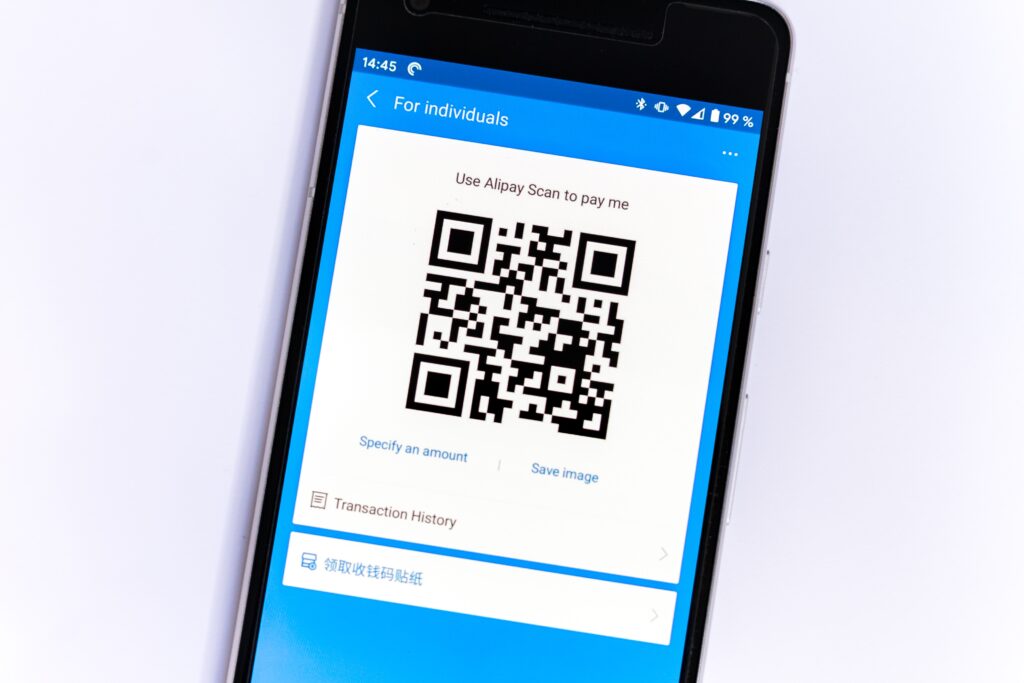In the fast-paced digital era, QR Codes and traditional barcodes are integral in streamlining data storage and retrieval processes across various industries. Though they share a common purpose, their functionalities, applications, and technological advancements set them apart.
This detailed exploration compares QR Codes and traditional barcodes, unraveling their unique characteristics, advantages, limitations, and the contexts in which they excel.

Understanding the Basics
QR Codes:
Originating from Japan in 1994, QR Codes revolutionized data encoding with their two-dimensional structure. They can encode up to 7,089 numeric characters or 4,296 alphanumeric characters, offering ample space for URLs, text, and more.
QR Codes’ versatility extends beyond industrial use to marketing, advertising, and personal applications. Their ability to be scanned from any direction enhances user convenience, and the advent of smartphones has made QR Codes universally accessible.
Traditional Barcodes:
The inception of traditional barcodes dates back to the 1970s, primarily for retail and inventory management. These one-dimensional codes represent data through varying widths and spacings of parallel lines.
While limited to 20-25 characters, their simplicity and cost-effectiveness make them a staple in retail, libraries, and logistical operations.
Advantages of QR Codes :
(Source: Pexels)
QR Codes offer unparalleled versatility and user engagement potential. They can store extensive data, including contact details, website links, and multimedia content. This high capacity enables diverse applications, from product authentication to augmented reality experiences.
Moreover, the creation of QR Codes has become increasingly user-friendly and accessible. For instance, Adobe Express offers the best free QR code generator, allowing anyone to create custom QR Codes effortlessly. This tool is particularly beneficial for businesses and individuals looking to integrate QR Codes into their marketing or operational strategies. Learn more about Adobe Express’s free QR code generator.
Continuing with their advantages, QR Codes also foster direct customer interaction by linking to digital content, thereby enhancing marketing strategies. Furthermore, their compatibility with smartphones has democratized data access, allowing seamless integration into everyday life.
The Enduring Relevance of Traditional Barcodes :
(Source: Pexels)
Despite the advent of QR Codes, traditional barcodes maintain their stronghold in various sectors. Their simplicity and cost-efficiency are unmatched, requiring minimal resources for printing and scanning.
This makes them ideal for businesses prioritizing budgetary constraints. Traditional barcodes’ proven reliability in inventory management and their widespread acceptance in global supply chains further cement their relevance.
Application Scenarios and Decision-Making:
Choosing between QR Codes and traditional barcodes depends on specific business needs. In retail and inventory management, traditional barcodes offer efficient tracking solutions.
Conversely, for interactive marketing and consumer engagement, QR Codes are more suitable. In situations with limited space, such as small product packaging, traditional barcodes are advantageous due to their compact size.
Future Trends and Developments :
Emerging trends hint at an exciting future for both technologies. QR Codes are evolving with enhanced security features and integration possibilities with IoT and AR.
Simultaneously, eco-friendly initiatives in barcode production are gaining momentum. Traditional barcodes aren’t far behind, with ongoing research focused on increasing data capacity while maintaining their compact size.
Table Comparison: QR Codes vs. Traditional Barcodes
| Feature | QR Codes | Traditional Barcodes |
| Dimension | Two-dimensional | One-dimensional |
| Data Capacity | Up to 7,089 numeric characters | 20-25 characters |
| Application | Marketing, tracking, personal use | Retail, inventory, logistics |
| Scanning Direction | Any direction | Specific direction |
| Cost | Higher due to complexity | Lower due to simplicity |
| User Interaction | High (links to digital content) | Limited |
| Smartphone Compatibility | Yes | No |
Conclusion
The choice between QR Codes and traditional barcodes should be guided by specific application needs and technological requirements. While QR Codes offer advanced interactivity and data capacity, traditional barcodes are invaluable for their simplicity and cost-effectiveness. As technology evolves, both will continue to play significant roles in various sectors, adapting to future challenges and opportunities.

